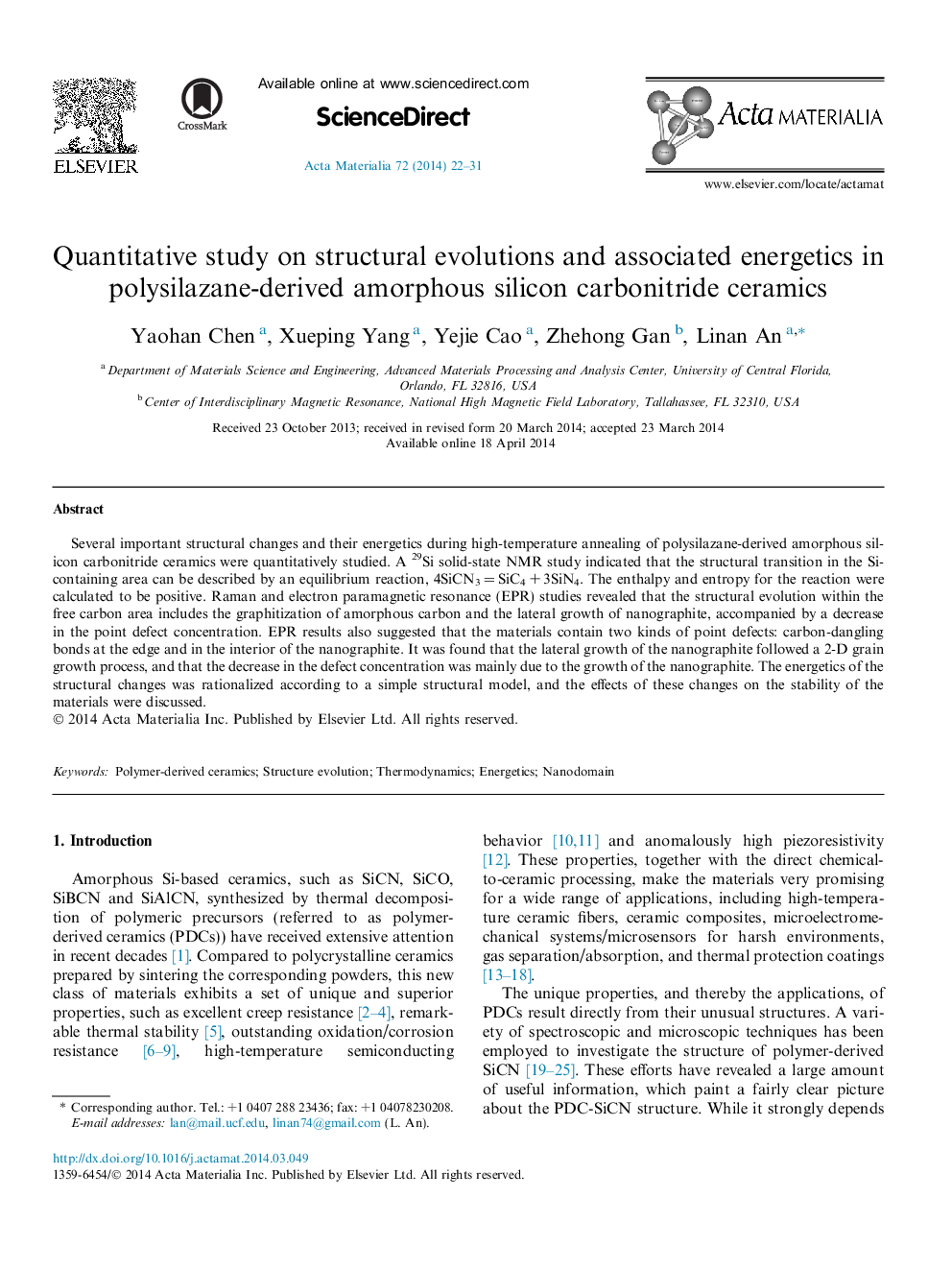| Article ID | Journal | Published Year | Pages | File Type |
|---|---|---|---|---|
| 7881810 | Acta Materialia | 2014 | 10 Pages |
Abstract
Several important structural changes and their energetics during high-temperature annealing of polysilazane-derived amorphous silicon carbonitride ceramics were quantitatively studied. A 29Si solid-state NMR study indicated that the structural transition in the Si-containing area can be described by an equilibrium reaction, 4SiCN3Â =Â SiC4Â +Â 3SiN4. The enthalpy and entropy for the reaction were calculated to be positive. Raman and electron paramagnetic resonance (EPR) studies revealed that the structural evolution within the free carbon area includes the graphitization of amorphous carbon and the lateral growth of nanographite, accompanied by a decrease in the point defect concentration. EPR results also suggested that the materials contain two kinds of point defects: carbon-dangling bonds at the edge and in the interior of the nanographite. It was found that the lateral growth of the nanographite followed a 2-D grain growth process, and that the decrease in the defect concentration was mainly due to the growth of the nanographite. The energetics of the structural changes was rationalized according to a simple structural model, and the effects of these changes on the stability of the materials were discussed.
Related Topics
Physical Sciences and Engineering
Materials Science
Ceramics and Composites
Authors
Yaohan Chen, Xueping Yang, Yejie Cao, Zhehong Gan, Linan An,
